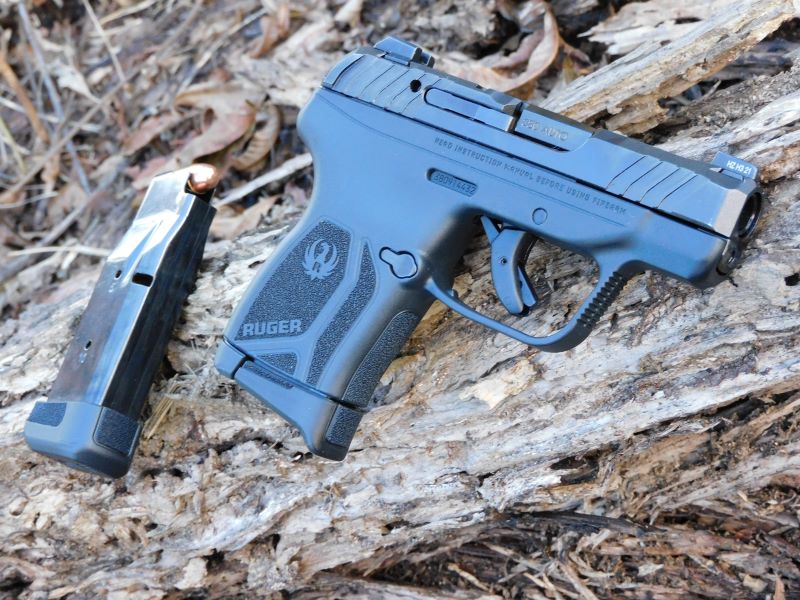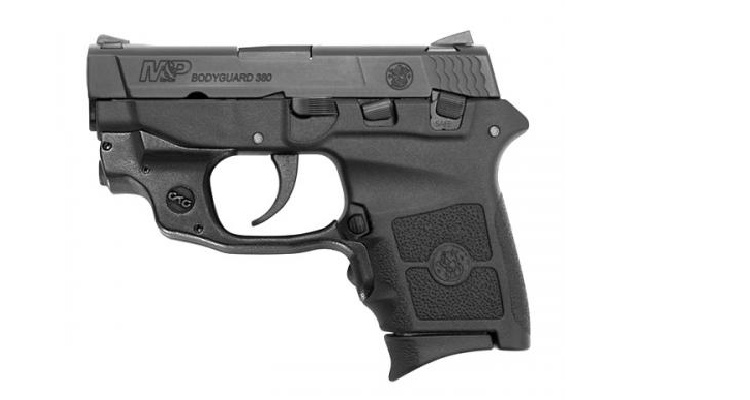It might seem odd now, but there was a time when the .380 ACP was destined for the dustbin. Yep, it was almost regulated to the status of .25 ACP and .32 ACP. Old, small calibers that no one wanted to shoot. What happened? Well, concealed carry Shall-Issue laws passed and carry guns took over the market. People were satisfied with the Glock 19 or even the 26. They wanted smaller and smaller guns, which led to the explosion of .380 ACP pocket pistols.

KelTec led the way with the P-3AT. Get it? Say it out loud, P 3 A T. Clever, but Ruger quickly followed them with the LCP, then the S&W Bodyguard, and the Taurus TCP. Since then, the field has grown significantly. These .380 ACP pistols were the size of .22LR and .25 ACP guns but packed a wallop with .380 ACP. They seemed great, but they’ve also lost a lot of popularity.
I believe they’ve lost that popularity because we are using .380 ACP all wrong. The .380 ACP shouldn’t be used in such small handguns. Our obsession with it is the same obsession that we have with calibers like .45 ACP. In handguns, bigger doesn’t necessarily mean better.
Who gets .380 ACP right?
Glock didn’t jump on the small, single-stack .380 ACP pocket pistol bandwagon. In fact, they took years to release the G42. It’s easy to argue that the G42 is no pocket pistol. It’s a fair bit bigger than the LCP and P-3AT. The 3.25-inch barrel broke the mold of barrel lengths of 2.7 to 2.85 inches.

The downside to these modern pocket pistols is their short barrels, amongst other issues. A shorter barrel can affect the velocity of the round, and velocity can affect a round’s ability to penetrate and expand. The .380 ACP works in pocket guns, but it’s not how the .380 ACP should be used.
History of the .380 ACP
John Browning designed the .380 ACP for the Browning M1908 Pocket Hammerless. While the gun is named Pocket Hammerless, don’t let it deceive you. These guns had 3.75-inch barrels for the majority of their run and four inches for the Type 1 models. By Pocket, they meant coat pocket. From there, we began seeing guns with barrels around in excess of three inches chambering the .380 ACP.

The FN M1910, the Walther PP series, the MauserHSc, the Beretta Model 83, and more all had a barrel in excess of three inches and often closer to four inches. These longer barrels and, ultimately, bigger guns were how the .380 ACP was designed to be used.
It’s worth noting that the .380 ACP and most loads designed for it do very well out of barrels in the 3.5-inch range, but begin suffering significantly with anything shorter. The trimming of the barrel gives the cartridge a fairly significant decline in ballistics.
Ballistic Decline
I looked at testing from Lucky Gunner, Ammo Amn, and Shooting the Bull. Each source did things a little differently, but all employed properly calibrated ballistic gel to measure penetration and observe expansion. Lucky Gunner used a Glock 42, Ammo Man used an LCP 2, and Shooting the Bull used a Taurus TCP.

Testing showed the Glock 42 did significantly better at penetration than the shorter barreled pocket pistols. Additionally, hollow points seem to have limited expansion with the shorter barrels. When faced with denim instead of bare gel, the expansion was limited, and sometimes we’d reach overpenetration.
It is ammo-dependent, but rounds that reached the sweet spot of 12 inches didn’t often have excellent expansion. Most of the time, they were just poking holes. The rounds that reach the 12-inch line without over-penetrating often don’t expand significantly. Admittedly you do get some expansion, but to end a fight, handgun rounds need to strike something vital more than they need to expand.
The Other Downsides
Why are pocket .380s slowly going out of fashion? Because they are a pain to shoot—a literal hand-slapping pain. Who knew a direct blowback gun firing the .380 ACP that weighs only eight ounces would hurt? We manly men can grind our teeth through the pain, so it’s no big deal, right?

Yeah, sure, I accept that. However, the recoil slapping your hand isn’t the only issue. We also have to deal with the force of recoil bringing your gun off target. This slows you down and makes it tougher to get accurate follow-up shots on target. It’s less efficient, and anyone who has shot an LCP side by side with something like a P365 will tell you the 9mm P365 is easier to shoot than the .380 LCP.
A slight increase in frame size goes a long way. So if you still need a pocket carry option. What can you do?
Alternatives to the .380 ACP
There are two options, and both involve stepping down from .380. You do have guns like the LCP 2 in 22LR. This gun has barely any recoil, and with the right round, the little .22LR can penetrate deep enough to reach something vital. Rimfires aren’t as reliable as centerfire guns, but they’ve gotten better and better.
Another option is the .32 ACP. This little cartridge can reach the required 12 inches but absolutely sucks with expansion. It is just poking holes, and it’s one of the calibers where FMJs provide better carry ammo than dedicated JHPs. Where to find a pocketable .32 ACP is the question.

Seecamp makes one, and it’s the more modern option. You can also do what I’m doing and wait on Innovative Arms to provide a .32 ACP barrel for the LCP series. You can also find a KelTec P32, but those seem to come and go in waves pretty quickly.
Admittedly against these two options, the .380 ACP is the only one that can achieve proper penetration with some expansion. However, these alternatives can allow you to land multiple, accurate hits quickly and sufficiently.
A Pocketful
The advent of pocket pistols and their sudden popularity changed perceptions about the .380 ACP. In reality, we are asking a lot from very little guns and not so little cartridges. Maybe if more companies experimented with smaller calibers that can reach the required penetration without all the recoil, we’d see pocket pistols make a comeback.

